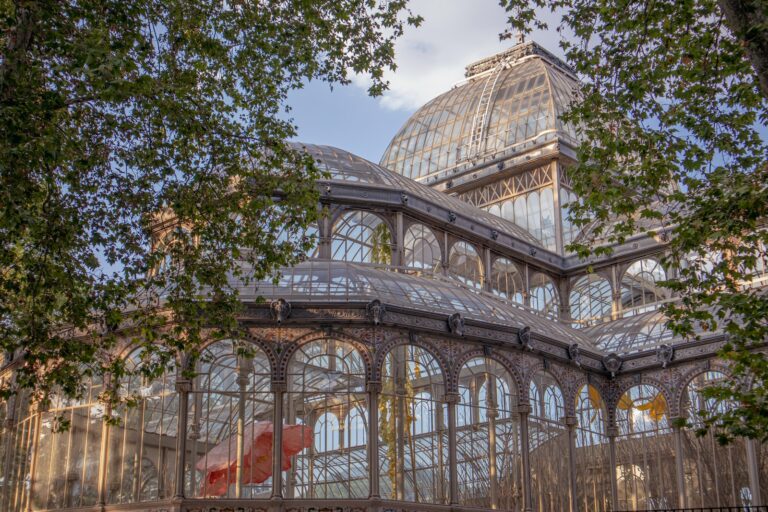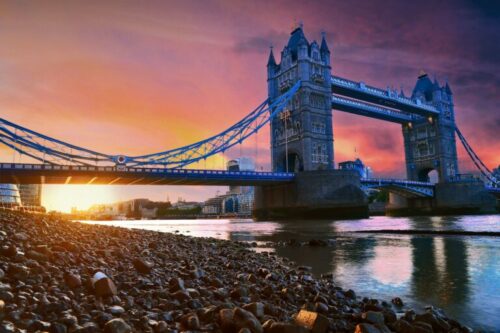London History
Have you ever wondered about the fascinating history behind the enchanting city of London? From its ancient Roman origins to its bustling Victorian era, London has a rich and captivating past just waiting to be explored. Immerse yourself in the tales of royalty, war, and innovation as you journey through the centuries and discover the secrets hidden within the iconic landmarks and cobblestone streets of this captivating city. Join us on a historical adventure as we uncover the charm and allure of London’s past.
Roman Era
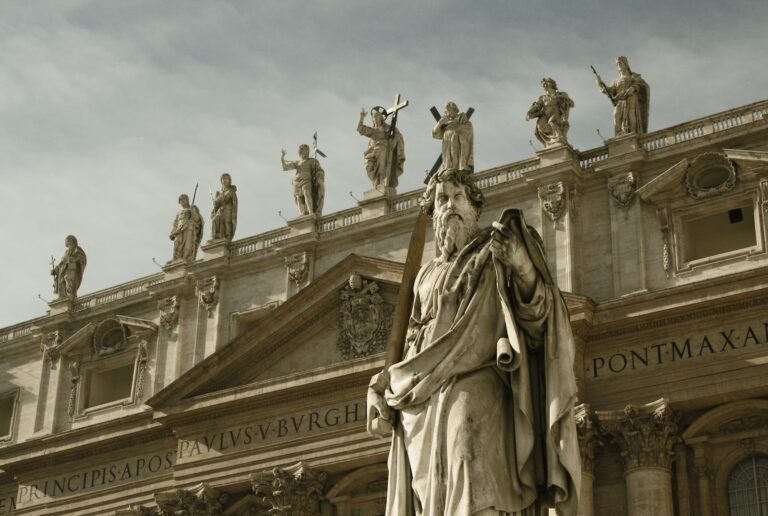
Foundation of London
London, a city with a rich and diverse history, traces its roots back to the Roman Era. The foundation of London can be attributed to the Romans, who established a settlement called Londinium in the 1st century AD. Situated on the banks of the River Thames, this strategic location provided easy access to waterways and trade routes, making it an ideal site for a bustling city.
Roman Wall
One of the enduring legacies of the Roman Era in London is the Roman Wall. Built-in the late 2nd century AD, the wall encircled the city, serving as a defensive structure. It stretched for nearly two miles and stood at around 20 feet tall, embodying the Roman engineering skills of the time. Sections of this wall can still be seen today, reminding us of London’s ancient past.
Roman Amphitheater
Another remarkable feature of Roman London was its amphitheater. Located in what is now the Guildhall area, this grand structure could accommodate up to 6,000 spectators and hosted various forms of entertainment, including gladiatorial combat, animal hunts, and theatrical performances. The remains of the amphitheater were discovered in the 1980s during archaeological excavations, providing valuable insights into the vibrant Roman cultural scene.
Londinium, the Roman City
Londinium quickly grew into a thriving city under Roman rule. It became an important commercial center, attracting merchants and traders from across the Roman Empire. The city boasted an extensive road network, public buildings, and a bustling marketplace, all contributing to its status as a vibrant hub of activity. The Romans also established a bridge across the Thames, a vital link for trade and transportation.
Roman Baths in London
The Romans were renowned for their appreciation of public baths, and London was no exception. The Roman Baths in Londinium were popular social gathering places, complete with heated rooms, steam baths, and cold plunge pools. These establishments provided not only a place for physical well-being but also served as social hubs where people could relax, socialize, and conduct business. The remains of Roman baths can still be seen at various sites in London, a testament to their enduring appeal.
Medieval Period
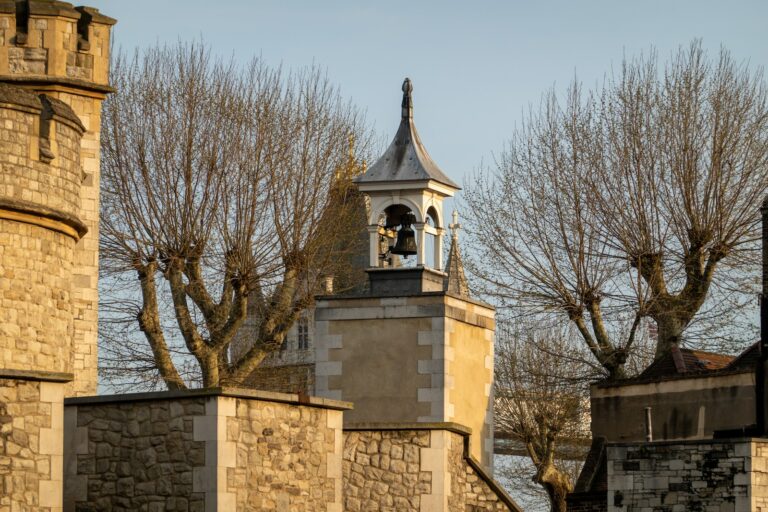
Norman Conquest
The Medieval Period in London’s history began with the Norman Conquest in 1066. The Normans, led by William the Conqueror, defeated the Anglo-Saxon King Harold II at the Battle of Hastings and took control of England. This marked a significant turning point for London, as the Normans introduced their own social structure, legal system, and architectural styles, shaping the city for centuries to come.
Tower of London
One of the most iconic landmarks from the Medieval Period is the Tower of London. Built by William the Conqueror, this fortress served as a royal residence, a prison, and a place of execution. Today, the Tower stands as a testament to London’s storied past, housing the Crown Jewels and attracting millions of visitors each year.
Westminster Abbey
Westminster Abbey, another medieval masterpiece, is an architectural gem that has witnessed countless coronations, royal weddings, and funerals throughout history. This grand Gothic abbey has been the traditional site for the coronation of British monarchs since the 13th century and continues to hold a significant place in the hearts of the British people.
London Bridge
During the Medieval Period, London Bridge became a critical crossing point over the River Thames. The bridge was lined with shops, houses, and even a chapel, creating a bustling and vibrant atmosphere. It played a pivotal role in the city’s growth and development, connecting different parts of London and facilitating trade and commerce.
The Great Fire of London
In 1666, London was ravaged by a catastrophic fire that forever changed its landscape. The Great Fire of London started in a bakery on Pudding Lane and quickly spread, consuming large parts of the city. Despite the widespread destruction, the Great Fire led to the implementation of improved building regulations and fire safety measures, which helped shape the future architecture and layout of London.
Tudor and Elizabethan Era
Henry VIII and the Tudor Dynasty
The Tudor and Elizabethan Era in London’s history is closely associated with the reign of the infamous King Henry VIII. Known for his six marriages and the establishment of the Church of England, Henry VIII had a profound impact on London and its institutions. The Tudor Dynasty brought stability, wealth, and cultural development to the city, emphasizing London’s importance as the hub of the nation.
Hampton Court Palace
One of the most significant architectural legacies from this period is Hampton Court Palace. Originally built by Cardinal Thomas Wolsey, the palace became Henry VIII’s grand residence and a symbol of his power. Today, visitors can explore the opulent rooms, and stunning gardens, and experience a glimpse into the Tudor lifestyle.
Elizabethan Golden Age
Queen Elizabeth I, the last monarch of the Tudor Dynasty, ushered in a period known as the Elizabethan Golden Age. This era was characterized by a flourishing of arts, literature, and exploration. The likes of William Shakespeare, Christopher Marlowe, and Sir Francis Drake contributed to London’s cultural and intellectual renaissance, leaving an indelible mark on the city’s history.
The Globe Theatre
Theater played a pivotal role in Elizabethan London, and the Globe Theatre was at the heart of the action. Owned by Shakespeare’s company, the theater showcased many of his most famous works, including “Romeo and Juliet,” “Hamlet,” and “Macbeth.” Although the original Globe Theatre burned down in 1613, a faithful reconstruction now stands on the banks of the Thames, allowing visitors to experience the magic of Shakespearean plays.
St. Paul’s Cathedral
St. Paul’s Cathedral, an iconic symbol of London, also dates back to the Tudor and Elizabethan Era. The original medieval cathedral was destroyed in the Great Fire of London, leading to the construction of the magnificent St. Paul’s we see today. This architectural masterpiece, designed by Sir Christopher Wren, continues to serve as a place of worship and a landmark that epitomizes the resilience and endurance of London.
Industrial Revolution
Effects of Industrialization
The Industrial Revolution, a period of rapid technological advancements and urbanization, had a profound impact on London. With the advent of steam power, factories, and manufacturing industries, London transformed from a predominantly agrarian society into a bustling metropolis. The city experienced a surge in population, leading to overcrowding, poor living conditions, and social inequality.
Docklands and East London
The rise of the Industrial Revolution brought significant changes to the city’s landscape. The Docklands area in East London became a hub of maritime trade, with docks, warehouses, and factories lining the riverbanks. However, in the latter half of the 20th century, the decline of traditional industries led to the revitalization and regeneration of the Docklands, transforming it into a thriving commercial and residential district.
Thames Embankment
The Industrial Revolution also saw the construction of the Thames Embankment, a monumental engineering project aimed at reclaiming land and improving the city’s infrastructure. This embankment not only provided much-needed flood protection but also created new roads, walkways, and public spaces, enhancing the connectivity and accessibility of the city.
Crystal Palace
London’s role as a center of innovation and progress during the Industrial Revolution was epitomized by the Crystal Palace. Originally built for the Great Exhibition of 1851, this iconic glass and iron structure showcased the technological achievements of the time. Although the original Crystal Palace was destroyed by fire, its legacy lives on, symbolizing London’s pioneering spirit and its contribution to the industrial advancements of the world.
The Great Exhibition of 1851
The Great Exhibition, held in the Crystal Palace, was a seminal event in London’s history. Organized by Prince Albert, the exhibition brought together exhibits from all corners of the world, showcasing the incredible advancements in technology, art, and culture. This groundbreaking event not only highlighted London’s position as a global hub but also stimulated international trade and cultural exchange.
Victorian Era
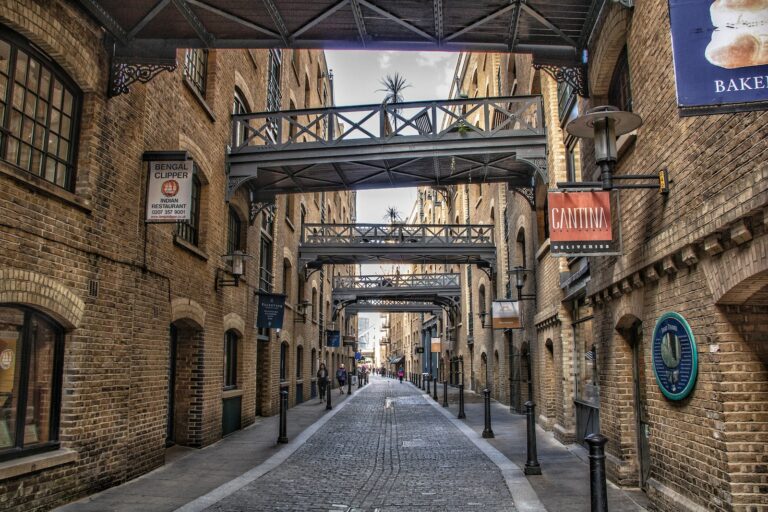
Queen Victoria
The Victorian Era, named after Queen Victoria, spanned from 1837 to 1901 and was marked by significant social, political, and economic changes. Queen Victoria’s reign saw a period of stability and expansion for London, as the city continued to grow and develop into a global capital.
Victorian Architecture
London’s streetscape was transformed during the Victorian Era by the construction of grand buildings and iconic landmarks. The Gothic Revival architecture, epitomized by the likes of the Houses of Parliament and Buckingham Palace, became synonymous with Victorian London. Ornate terraced houses, public parks, and railway stations also became common features of the Victorian cityscape, shaping the character of the neighborhoods we recognize today.
London Underground
The Victorian Era witnessed the birth of the world’s first underground railway system, known today as the London Underground, or the Tube. In 1863, the Metropolitan Railway opened its doors, revolutionizing transportation in London. The Tube network expanded rapidly, connecting distant suburbs to the city center and facilitating the movement of people and goods across London. The iconic roundel logo and distinctive architecture of some of the Tube stations stand as enduring symbols of Victorian ingenuity.
Hyde Park
Hyde Park, a vast green oasis in the heart of London, became an integral part of Victorian London. The park underwent extensive landscaping, transforming it into a space for leisure and recreation. Under the influence of Queen Victoria and her family, Hyde Park became a popular venue for horse riding, strolling, and social gatherings, providing an escape from the hustle and bustle of the urban environment.
Jack the Ripper
The Victorian Era is also associated with one of London’s most infamous figures, Jack the Ripper. The Whitechapel murders, attributed to this unknown serial killer, sent shockwaves through the city in the late 19th century. The identity of Jack the Ripper remains a mystery to this day, but his crimes have been the subject of numerous books, films, and cultural references, adding an air of intrigue to Victorian London.
World War I
Bombs and Air Raids
London, like many global cities, faced significant challenges during World War I. The city experienced its fair share of bombing raids, as German Zeppelin airships targeted London in an attempt to undermine British morale and disrupt the war effort. The bombings caused widespread destruction, with many iconic landmarks and residential areas suffering damage.
Zeppelin Attacks
German Zeppelins played a prominent role in the air raids on London during World War I. These massive airships, capable of carrying bombs, struck fear into the hearts of Londoners as they flew overhead. The attacks not only caused physical damage but also had a psychological impact on the population, as people lived in constant fear of the next bombing raid.
Contribution to the War Effort
Despite the challenges and hardships, London played a vital role in supporting the war effort during World War I. The city became a center for munitions production, with factories working round the clock to produce weapons, ammunition, and supplies. Londoners also contributed through various volunteer efforts, such as fundraising, nursing, and providing support to soldiers on the front lines.
Trench Warfare
While London was not directly involved in the trench warfare that characterized World War I, the impact of this style of warfare was felt throughout the city. Soldiers returning from the trenches brought with them physical and psychological scars, and the war’s toll on the population and the city’s infrastructure was profound.
London’s War Memorials
London is home to numerous war memorials that pay tribute to the lives lost during World War I. From the Cenotaph on Whitehall, which serves as the focal point for Remembrance Sunday ceremonies, to the individual memorials scattered throughout the city’s parks and squares, these monuments stand as solemn reminders of the sacrifices made by Londoners during the war.
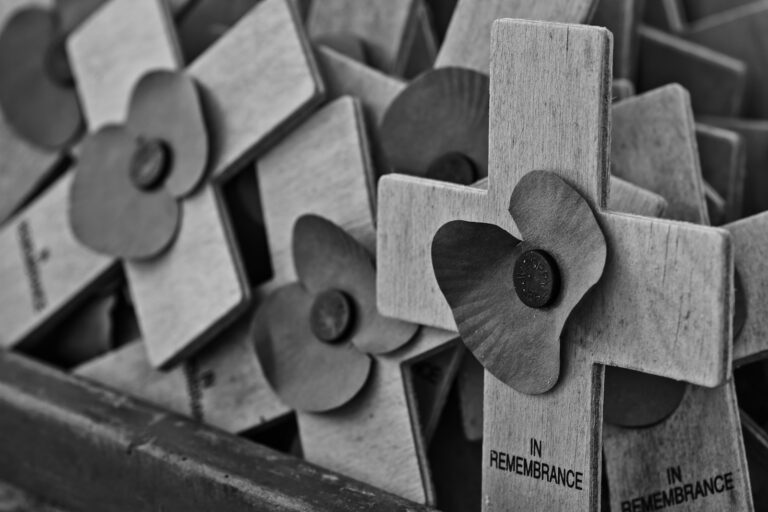
World War II
The Blitz
World War II saw London endure one of its darkest chapters during the Blitz. From September 1940 to May 1941, the city faced relentless bombing by the German Luftwaffe. The Blitz aimed to demoralize the British people and destroy London’s infrastructure, but the resilience of Londoners proved unshakeable. Despite the widespread destruction, the spirit of the city endured, and the resolve to rebuild and recover grew stronger.
Evacuation and the Home Front
During World War II, many Londoners, particularly children, were evacuated from the city to escape the heavy bombing. The home front became a crucial part of London’s war effort, as citizens supported the military through various means, such as working in factories, growing food in allotments, and participating in civil defense efforts. The people of London displayed unwavering courage and unity in the face of adversity.
Battle of Britain
London played a pivotal role in the Battle of Britain, a critical chapter in World War II. The city was at the forefront of the German Luftwaffe’s intense aerial attacks as they sought to gain air superiority over Britain. The Royal Air Force’s successful defense of London and the rest of the country against the Luftwaffe’s onslaught bolstered British morale and marked a turning point in the war.
Bunker and War Rooms
To coordinate the war effort, the British government set up underground bunkers and war rooms in London. The most famous of these is the Cabinet War Rooms, which served as the nerve center for Prime Minister Winston Churchill and his government. Today, visitors can explore these historic spaces and gain insight into the challenges faced by London and its leaders during World War II.
St. Paul’s Survives
One of the most iconic images from the Blitz is that of St. Paul’s Cathedral standing defiantly amid the destruction. Despite being targeted by German bombers, St. Paul’s miraculously survived the war largely intact. Its survival symbolized the strength and resilience of London and its people, becoming a powerful symbol of hope and determination in the face of adversity.
Post-War Period
Reconstruction and Rebuilding
The post-war period was characterized by a massive reconstruction effort to rebuild the city and restore its infrastructure. London faced the enormous task of repairing the damage caused by the Blitz and addressing the needs of a growing population. This period marked the beginning of significant redevelopment projects that would shape London’s modern skyline.
Festival of Britain
In 1951, London hosted the Festival of Britain, an event designed to celebrate British culture, innovation, and recovery in the aftermath of World War II. The festival showcased cutting-edge design, art, and technology and was held on the South Bank of the River Thames. The festival rejuvenated public morale and instilled a sense of optimism for the future of London and the nation as a whole.
Post-War Immigration
The post-war period also saw an influx of immigrants from former British colonies, as well as refugees and displaced persons from war-torn Europe. These new arrivals brought diverse cultures, languages, and traditions to London, enriching the fabric of the city and contributing to its multicultural identity. The impact of post-war immigration continues to shape modern London and is evident in its vibrant communities and global cuisine.
Swinging Sixties
London’s cultural scene experienced a revolution in the 1960s, epitomized by the Swinging Sixties. This era saw the rise of the British music scene, with bands like The Beatles, The Rolling Stones, and The Who dominating the charts and capturing the world’s attention. Fashion, art, and youth culture thrived during this decade, making London the center of popular culture and a global trendsetter.
Carnaby Street
As an iconic symbol of the Swinging Sixties, Carnaby Street became synonymous with fashion and rebellious youth culture. The street was home to independent boutiques, fashion designers, record shops, and coffee bars, attracting trendsetters and fashionistas from around the world. Carnaby Street remains a popular destination and a nod to London’s vibrant and ever-evolving fashion scene.
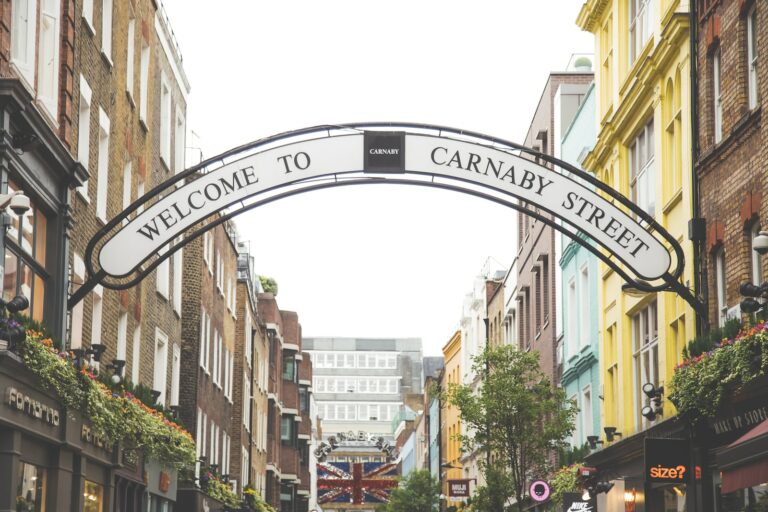
Modern London
Financial Hub
London has long been recognized as a major global financial center, and its modern significance in this regard cannot be overstated. The City of London, often referred to as the Square Mile, is home to numerous financial institutions, including the London Stock Exchange and the Bank of England. The city’s international reputation as a hub for banking, finance, and commerce has contributed significantly to its economic prosperity.
Cultural Diversity
Modern London is a melting pot of cultures and is celebrated for its diversity. The city’s vibrant multicultural population contributes to a rich tapestry of languages, traditions, and cuisines. From vibrant Chinatown to colorful Indian markets and bustling African communities, London’s multiculturalism has shaped its identity, making it a truly global city that welcomes people from all backgrounds.
Regeneration Projects
Over the past few decades, London has witnessed a series of regeneration projects aimed at revitalizing various parts of the city. Areas such as Docklands, once in decline, have experienced significant redevelopment and have been transformed into thriving residential and commercial districts. Other projects, such as the revitalization of King’s Cross and the redevelopment of Stratford for the Olympic Games, have rejuvenated previously neglected areas, enhancing the overall urban landscape of London.
London Eye and Millennium Bridge
Two iconic additions to London’s skyline in the modern era are the London Eye and the Millennium Bridge. The London Eye, a giant Ferris wheel located on the South Bank of the River Thames, offers panoramic views of the city and has become one of London’s most popular tourist attractions. The Millennium Bridge, a pedestrian bridge that spans the River Thames, provides an architectural marvel and serves as a symbol of innovation and progress.
Olympic Games 2012
The hosting of the Olympic Games in 2012 showcased London on the global stage once again. The city welcomed athletes and spectators from around the world, and the Games provided an opportunity to showcase London’s ability to host major international events. The Olympic Park in Stratford, East London, has since been transformed into a vibrant hub for sports, recreation, and cultural activities, leaving a lasting legacy for the city.
Contemporary London
Brexit and Its Impact
In recent years, London has been at the center of one of the most significant events in modern British history: Brexit. The decision to leave the European Union has had far-reaching implications for London’s economy, politics, and international standing. The full impact of Brexit is yet to be fully realized, but London continues to adapt and navigate the challenges and opportunities that lie ahead.
Changing Skyline
London’s skyline continues to evolve and change as more ambitious architectural projects take shape. The Shard, a towering glass skyscraper, has become an iconic symbol of contemporary London, offering breathtaking views of the city. Other notable architectural landmarks, such as the Gherkin and the Walkie-Talkie, contribute to the city’s ever-changing urban landscape.
Terrorist Attacks
Like many major cities around the world, London has sadly faced its share of terrorist attacks in recent years. These acts of violence have shaken the city but have also demonstrated the resilience and unity of Londoners. The city’s response to such tragedies has shown its commitment to remaining open, inclusive, and strong in the face of adversity.
Gentrification and Social Issues
Gentrification, the process of renovating and improving urban areas, has become a topic of debate and concern in contemporary London. While gentrification brings investment and rejuvenation to neglected neighborhoods, it can also lead to the displacement of long-standing communities and the loss of affordable housing. London continues to grapple with issues of social inequality and ensuring that the city remains accessible and inclusive for all.
Influential Londoners
Throughout its history, London has been home to countless influential figures who have left their mark on the city and the world. From legendary writers like Charles Dickens and Virginia Woolf to pioneering musicians like David Bowie and Adele, the influence of Londoners on various fields of art, music, literature, science, and politics cannot be understated. The city continues to inspire and nurture talent, ensuring that its legacy of influential Londoners lives on.
In conclusion, London’s rich and diverse history spans millennia, with each era leaving its indelible mark on the city. From its humble beginnings as a Roman settlement to its position as a global financial and cultural center, London has evolved and adapted through triumph and adversity. The city’s past, present, and future are intricately woven together, creating a tapestry of stories, achievements, and challenges that define London and its people. As you explore the vibrant streets and iconic landmarks of this remarkable city, it’s impossible not to feel the weight of history and appreciate the incredible journey that has brought London to where it stands today.

